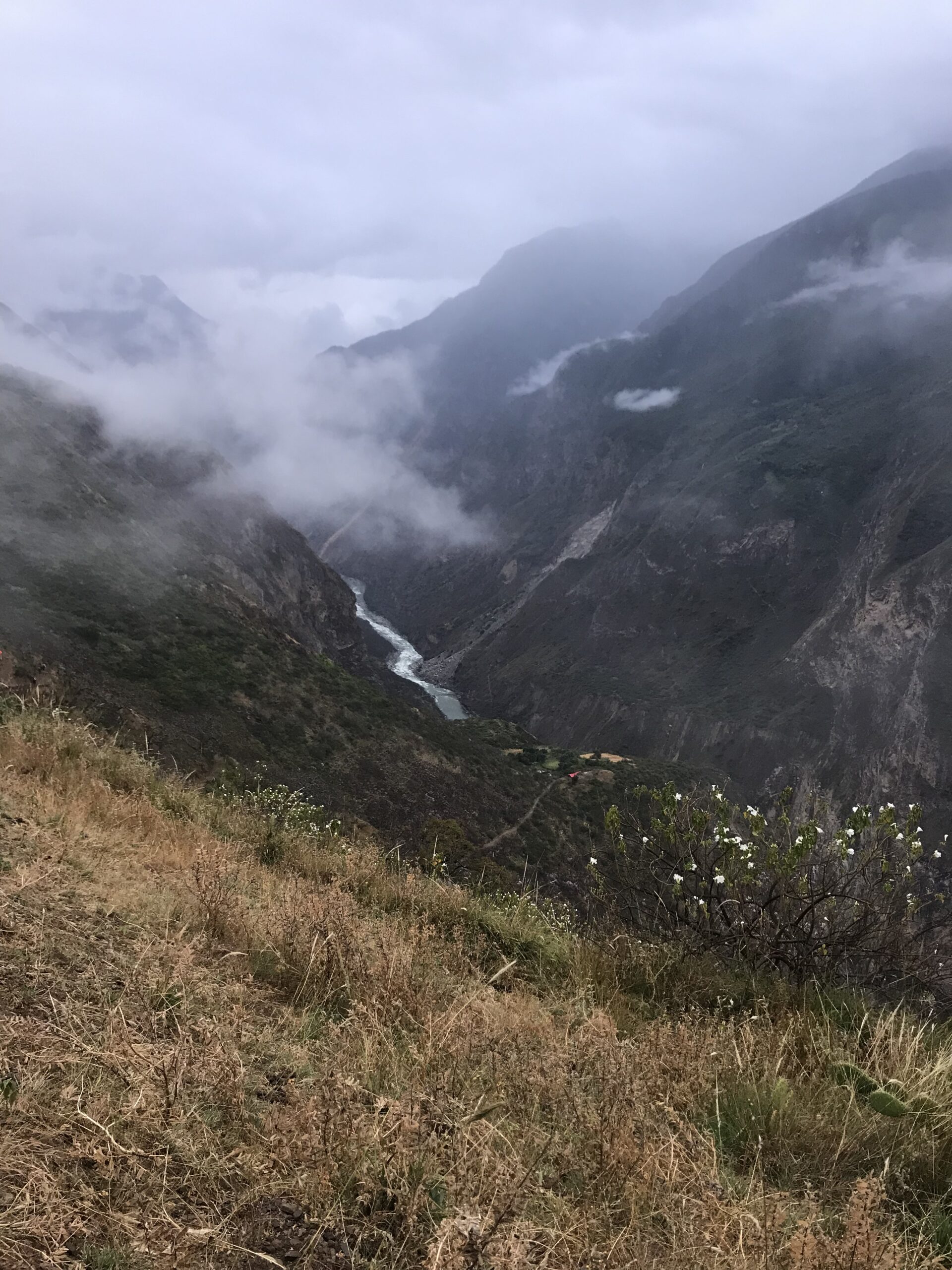In the last post, I covered the preparation and planning to reach the trailhead. This post is about the hike itself.
Along the trail, there are four settlements of note. In order from Capuliyoc: Cocamasana, Chiquisca (also spelled Chiquiska), Santa Rosa and Marampata. Two of them, Chiquisca and Marampata, are large enough to have guest houses, while some others simply provide a toilet and a spot of ground to set up a tent on. Chiquisca, Marampata and Santa Rosa have comedores and provide hot meals. Most of these places also sell bottled drinking water and snacks.
Our plan was to stay as light as possible and cover more ground, so we opted to sleep at accommodations instead of camping. We would stay at Marampata the first night and at Chiquisca the second.
Turns out, compressing a four-day hike into two-and-a-half makes for some tough days…
Day 1
We had 15 kms ahead of us, starting with a steep descent into the canyon, and then a long ascent to Marampata. We hoped to do most of the climb in the first part of the day; the slope of the canyon wall relative to the angle of the sun would provide us a little bit of shade.
And so we started the hike at 4.30 am, in complete darkness.

It was foggy when we began and started drizzling as we made our way down. This magic combination of downhill, poor visibility, loose rocks and rain makes for probably the worst hiking conditions, and I nearly rolled my ankle half a dozen times. Raoul snapped his hiking pole twenty minutes into the hike and somehow also managed to rip his shirt soon after.


The first stop on our way was the settlement of Chiquisca at 7 am. So far, we had run into two others hikers and guide, hiking out, and a couple of muleteers. The trail to Choquequirao is extremely straightforward, without any confusing turns or branches, well-marked, and being the main source of transport for the settlements along the way, heavily-trafficked by mules.


At Chiquisca, we ate an enormous breakfast for a grand price of 10 soles per person. I was quite glad to get real coffee with it (unlike instant coffee powder, which is all you can expect in Argentina). In Peru, it’s prepared like a concentrate and comes with a thermos of hot water so you can dilute it to your desired strength. “Tea time” also includes dried coca leaves for making coca tea, or just for chewing as is. To avoid the plastic waste associated with buying bottled water all the time, I would pour any leftover hot water into a spare water bottle after we were done, and drink it once cooled.
Afterwards, we chatted a bit with the folks running that establishment. One of them expressed great concern for our knees after we told him we were aiming to reach Marampata, but then assured us that it’s only a few more hours.
And so on that semi-encouraging note, we hiked on.


We made quick work of the distance from Chiquisca to the Apurímac, being all downhill. And then the slog began. Mercifully, we had a cloud cover pretty much until the very end.
Along the way, we met other hikers (all with guides), many more mules and muleteers, and then: Renzo! He was with his tour group. It was quite a nice surprise to run into someone I know so in the middle of nowhere.
We were finally done at 2.30 pm, making it a solid 10 hours on the trail.
Marampata is the largest of the settlements along the trail, and is also known as the gateway to Choquequirao. As such, nearly every family there seemed to be running a guest house, providing us with a large variety of accommodations to choose from: from cabañas with a view of the canyon, to dingy rooms with barely a window.

We hadn’t reserved ahead, so we walked through the entire place, checking out our options. We ended up going with a pretty basic room for 50 soles per night. The room was nothing special, but their front yard had 2 chickens, 3 babies, and a beautiful view.



I had a cold shower, Raoul had a hot one, we both ate a hearty late lunch and soaked up some of those afternoon rays. We called it an early night, but not before enjoying some homemade macerados (infused liquors) from the lady next door, as we watched the sun set and colour the sky pink, purple and orange.


The next day was Choquequirao.

